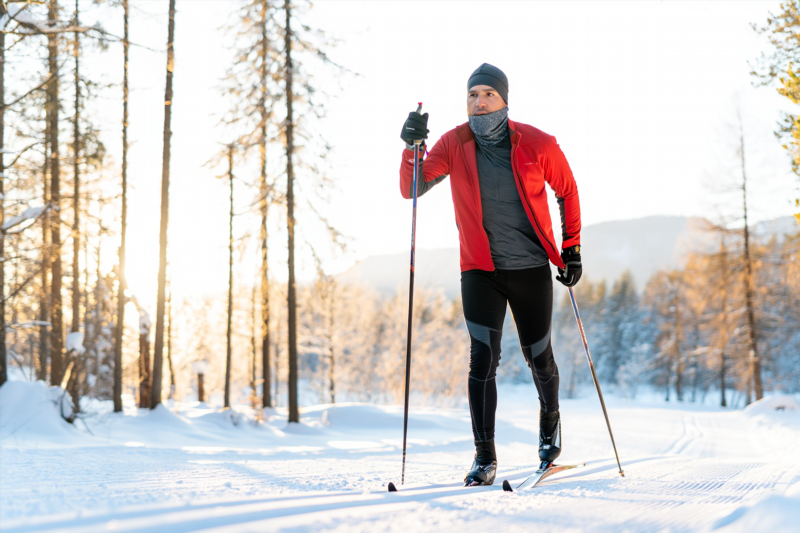Engaging in cross-country skiing during winter offers exhilarating experiences, health benefits, and a profound connection with nature. However, training in cold weather necessitates specialized precautions to stay warm, safe, and injury-free. This article provides expert tips to help you maximize your winter workouts, ensuring you maintain core warmth, prevent common cold weather injuries, and enjoy the beauty of snow-covered trails year-round.
Why Cold Weather Fitness Requires Special Attention
Training in chilly conditions not only challenges your cardiovascular endurance but can also expose you to risks such as hypothermia, frostbite, and slips. Proper preparation and strategy enable you to push your limits safely, enjoying snow trails without compromising your health.
Key benefits of tailored cold weather training include:
- Enhanced endurance and stamina
- Strengthening immune response against winter illnesses
- Improved technique in winter terrain
- Greater enjoyment of winter landscapes
Essential Strategies for Safe Cold Weather Cross-Country Skiing
1. Dress Smart: Layering for Optimal Warmth
Effective layering traps heat, manages moisture, and provides flexibility for varying exertion levels. Use the “Base, Insulation, and Outer Layer” system:
| Layer Type | Purpose | Recommendations |
| Base Layer | Moisture-wicking, close to skin | Merino wool or synthetic thermal underwear |
| Insulation | Retains body heat | Fleece, down vests, insulated tops |
| Outer Layer | Windproof and waterproof shell | Breathable jackets and pants with weather-resistant membranes |
Pro Tip: Avoid cotton as it traps moisture and chills the body. Opt for technical fabrics designed for cold climates.
2. Protect Extremities: Hands, Feet, and Head
A significant portion of heat loss occurs through exposed limbs and head. Prioritize:
- Warm gloves or mittens: Layer with glove liners for added insulation.
- Thermal socks and waterproof boots: Ensure proper fit to prevent blisters and frostbite.
- Thermal hats or headbands: Cover ears to prevent frostbite, as they are highly susceptible to cold injury.
3. Warm-Up and Cool-Down Properly
Proper warm-up increases blood flow, reducing injury risk. Save 10-15 minutes for dynamic stretches and light movements—jumping jacks, arm swings, or slow ski strides. Cool down with gentle stretching to prevent stiffness and promote recovery.
4. Hydrate and Fuel Adequately
Cold weather can mask dehydration. Consume warm drinks like herbal tea or electrolyte-rich beverages before, during, and after workout sessions. Carry energy gels or snacks to replenish glycogen stores and maintain energy levels on the trail.
5. Choose Safe Trails and Be Prepared for Emergencies
- Select well-maintained, populated routes to reduce risks.
- Carry essentials: Map, compass/GPS, fully charged phone, first aid kit, and emergency blanket.
- Check weather forecasts before venturing out, and avoid training during extreme cold or storms.
How to Prevent Common Cold Weather Injuries
Hypothermia and Frostbite
- Recognize signs such as shivering, confusion, numbness, and skin discoloration.
- Prevent by dressing in appropriate layers and avoiding prolonged exposure to wind and cold.
- Stay active: Movement generates body heat, but avoid overexertion that leads to sweating, which can cool the body rapidly.
Slips and Falls
- Use boots with good traction; consider traction devices if icy conditions prevail.
- Maintain proper balance and adjust speed to trail conditions.
- Practice controlled, deliberate movements—avoid rushing.
Expert Advice: Combining Technique with Cold Weather Readiness
- Adjust your pacing: Cold conditions can cause quicker fatigue; listen to your body.
- Focus on technique: Proper skating or diagonal stride skills increase efficiency and reduce the risk of overexertion.
- Monitor weather conditions: Postpone training during severe cold snaps or storms for safety.
Frequently Asked Questions
How cold is too cold for cross-country skiing?
Most experts recommend postponing vigorous outdoor workouts when temperatures fall below -20°C (-4°F), especially with wind chill, due to increased risks of frostbite and hypothermia. Always check local weather advisories.
Can I wear just thermals for winter workouts?
No, thermals are an essential base but should be supplemented with insulating layers and a waterproof shell for protection against wind and moisture.
How do I keep my hands and feet warm during long sessions?
Layering is key: wear moisture-wicking liners, insulated gloves or mittens, and thermal socks combined with waterproof boots. Gaiters can add extra protection against snow and cold.
Cross-country skiing in cold weather offers a unique blend of physical challenge and aesthetic pleasure. By adopting strategic gear choices, proper preparation, and safety measures, you can stay warm, prevent injuries, and enjoy winter workouts to their fullest. Experience the thrill of snowy trails while protecting your health—your winter adventure starts with expert guidance.
Ready to take your winter training to the next level?
Explore our comprehensive workout programs, gear recommendations, and race insights designed for every skill level. Embrace winter fitness safely and confidently today!
